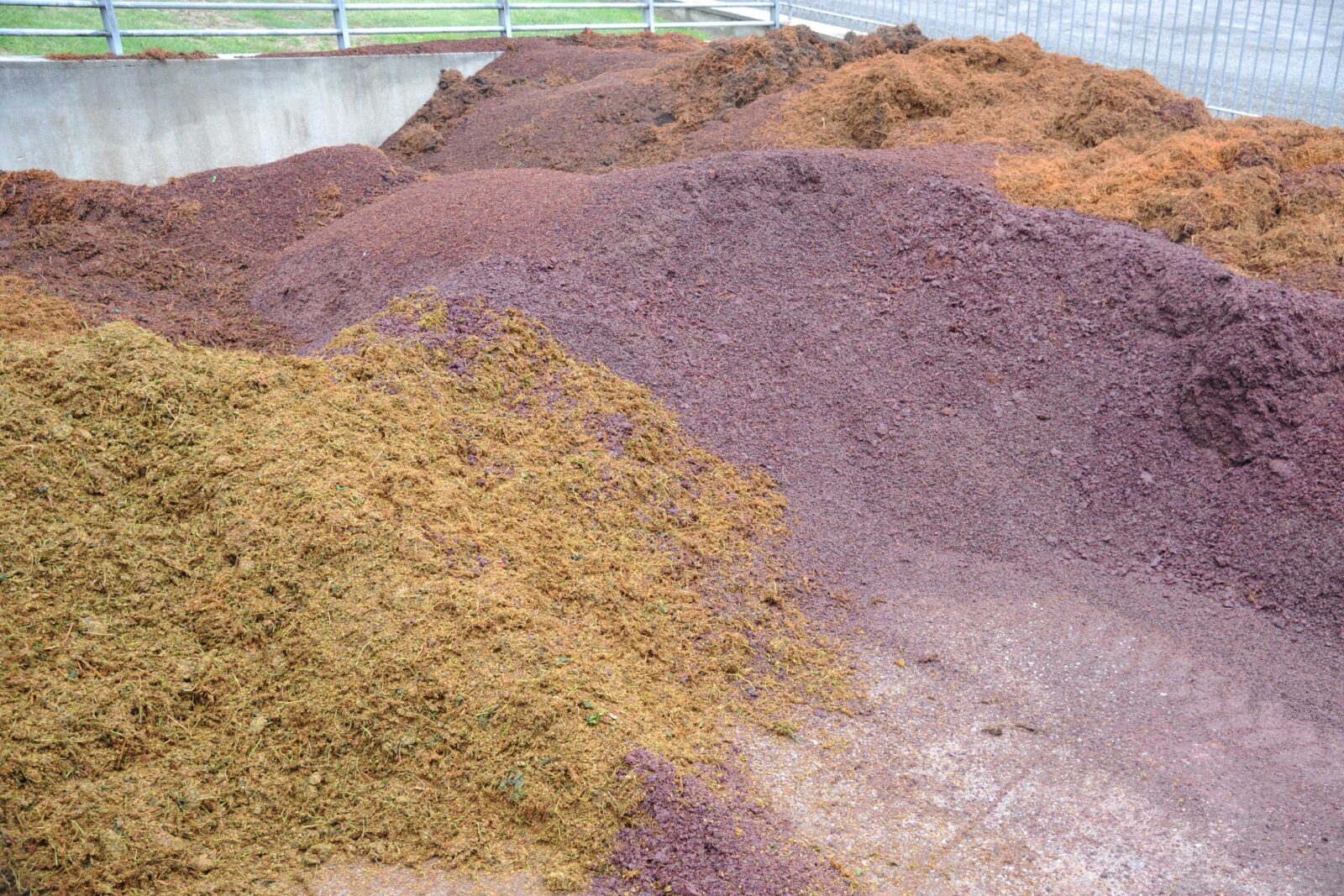Grape marc pellets
Grape marc is the solid residuals left after the pressing of grapes, olives or other fruit for juice or oil. Grape marc usually includes the skins, pulp, seeds and stems. The moisture content of fresh grape marc can be up to 65–68% water, therefore, grape marc must be dried or ensiled to preserve it if not used immediately. With such high moisture content, it would need to be dried before being used as litter in chicken sheds.
Grape marc is of low digestibility due to its high content of fibre and the presence of phenolic compounds. It can be used to feed ruminants in conjunction with higher nutritive feeds, however, it is not recommended for pigs or poultry as a source of energy or protein. Other uses include compost and a source of bioactive compounds (antioxidants). In Australia, grape marc is usually used as compost or as a feed for ruminants.
General properties of grape marc
The physical and chemical composition of grape marc depends on many factors, including the purpose of the crop (white wine, red wine, spirits, juice, oil, etc.), grape variety and maturity, and the techniques and/or machinery used throughout the process. More research on dried grape marc is needed before it can be used as chicken litter.
Application in the Australian chicken meat industry
Grape marc has not been used as chicken meat litter internationally or domestically and further research into its potential as litter is required. Specifically, the optimal initial moisture content, water activity and overall suitability to the chicken meat industry needs to be assessed. Additionally, trials are needed to optimise the litter for Australian conditions.
Practical considerations of using grape marc as chicken litter
Practical considerations that need to be assessed before using grape marc as litter in the Australian chicken meat industry include:
Table 1: Practical considerations of using miscanthus grass as chicken litter
| Practical considerations | Miscanthus grass litter | |
|---|---|---|
| Supply | Commercially available in Australia? | No, could establish sales agreement with biomass growers |
| Operation | Optimisation required for Australian conditions? | Bale size, chop length, harvest time, litter depth and management |
| Could it be available if demand was high? | Yes | |
| What might it cost if demand was high? | Comparable to wood products | |
| Management | Additional management practises needed? | Like straw |
| Regulation | Are there regulatory or market barriers to using miscanthus grass as litter? | Unlikely to be a problem |
| Other | Opportunity for farmers to produce bedding themselves | Easy crop to grow |
Content source: Review of fresh litter supply, management and spent litter utilisation, AgriFutures Australia final report 2018
Downloads and resources
- Best practice litter management manual for Australian chicken meat farms (PDF, 3MB) | online version
- Review of fresh litter supply, management and spent litter utilisation (PDF, 3.5MB)
- Litter re-use: an evidence-based guide to re-using litter (PDF, 1.3MB)
References
Burg, P., Vítěz, T., Turan, J. and Burgová, J. (2014) Evaluation of grape pomace composting process, Acta Universitatis Agriculturae et Silviculturae Mendelianae Brunensis, 62(5), pp. 875-881. OPEN ACCESS DOI:10.11118/actaun201462050875
García‐Lomillo, J. and González‐SanJosé, M. L. (2017) Applications of wine pomace in the food industry: approaches and functions, Comprehensive Reviews in Food Science and Food Safety, 16(1), pp. 3-22. DOI 10.1111/1541-4337.12238
Heuzé V., Tran G., 2020. Grape pomace. Feedipedia, a programme by INRAE, CIRAD, AFZ and FAO. https://www.feedipedia.org/node/691 Last updated on October 16, 2020, 10:32
Ye, Z., Harrison, R., Cheng, V. and Bekhit, A. (2015) ‘Wine making by-products’, Valorization of wine making by-products: CRC Press Boca Raton, pp. 73-115. ISBN 9781482255331


